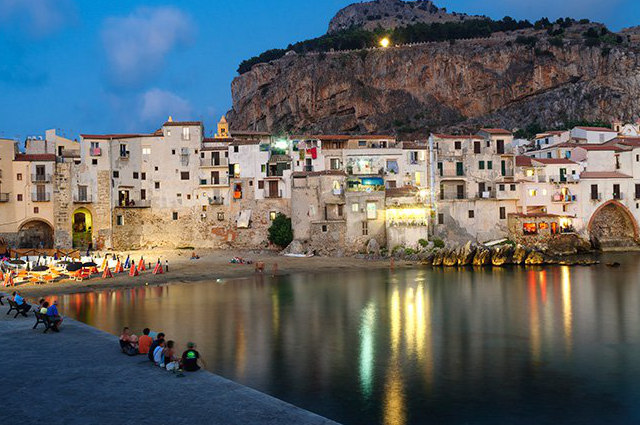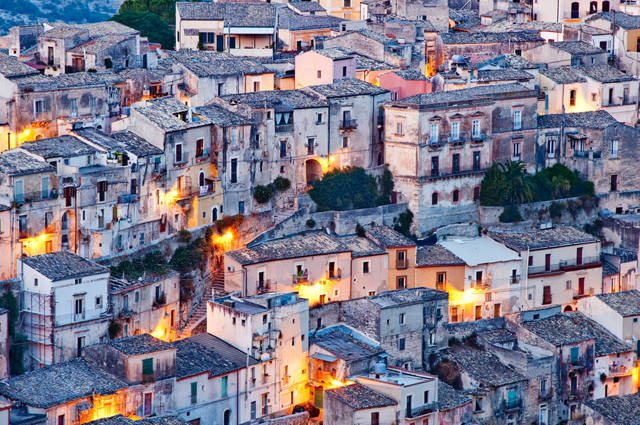


Sicily, separated from the Italian peninsula by the Straits of Messina, is the Mediterranean’s largest and most populous island, as well as the midpoint between east and west. The triangular main island is the axis of a constellation that includes Pantelleria and Ustica, as well as the Lipari (Aeolian). Egadi, and Pelagie groups. The region has 1,500 kilometres of coastline on the Tyrrhenian, Ionian and Sicilian seas (the latter flanked by the Maltese and Sicilian channels). The southern side of the main island is almost entirely arid hills, where irrigated vineyards are surrounded by brush, scrub, and cactus. The north is dominated by the Sicilian Apennines, whose pastures and grain fields give way to woods towards the east in the heights of the Nebrodi chain and the mass of Etna at 3,340 meters. Etna is one of three active volcanos – along with Stromboli and Vulcano in the Lipari isles – and much of Sicily’s soil is of volcanic origin. Only 15 percent of the land lies below 100 meters – mainly around Catania, Capo Passero, and Gela, as well as much of the province of Trapani, which produces Marsala and enormous quantities of blending and table wines. The southern and eastern zones around Marsala, Agrigento, and Ragusa are in the direct line of winds from Africa. Rainfall is scant between June and September, so drought is a frequent problem, which explains why about half the region’s vineyards are irrigated. The hills to the north and east are cooler and damper, but still blessed with ample sunshine for slow, even ripening of grapes. The mountains in the northeast get plenty of rain and snow. The highest peaks are usually snow-capped through the winter.
